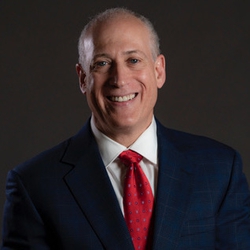In order for patients to say yes to your recommendations, you need to develop a good rapport with them. Why do some people buy from one company over another? It really has nothing to do with cost. People buy from people they like and trust. Once you show people you care, then they will trust you.
Trust really begins with the first phone call. You can read about how to properly answer the phones and make a great first impression on my blog. Rapport continues with the first meet and greet with the staff and then finally you, the doctor. Use the FORM technique when developing rapport with the patient. Family, Occupation, Recreation, and Miscellaneous. Spend a few minutes getting to know the patient, and find out what they like to do. Then find out what they cannot do because of their pain or injury.
Ask questions and truly listen. If the patient thinks you are distracted, then he or she might think you don’t care. Again, people buy from people who care about them. Ask questions like, “Why did you leave your last doctor?” and “What are some of your goals or outcomes that you would like to see happen?” If the patient is nervous, try to make them really comfortable. Ask them what their concerns are and how can ease their mind.
During the questioning, find out what are some of the patient’s needs while they are Electric Repair Detroit. “I would like to run again,” or “I want to be able to run around with my grandchildren.” It can be just, “I want to work all day without pain.” Whatever it is, paint a realistic picture as well as give them confidence that you will do whatever it takes to meet their goals.
There are three main reasons why patients do not buy from you. They are time, fear, and money. You need to handle all three possible objections during your presentation. Your office should have convenient hours for the patient. This does not mean you should be open 24-7, but if the majority of your patients require evening and Saturday hours, then you need to make sure your office is open during these times. I did not say you need to be there, but a clinician should be available.
Fear is the big one. Fear could be anything from fear of pain, fear of a poor aesthetic or physical outcome, fear of an expensive procedure, or fear of not being able to go back to work and make money.
Make sure all fears are handled. If the patient is afraid of pain, discuss how you are going to make them comfortable. Maybe you have written or video testimonials from other patients who had a similar procedure and they describe how comfortable the office made them feel. Testimonials are a fantastic way to make the patient feel at ease.
People want to gain health, time, money, improved appearance, praise, happiness, and satisfaction. The key during the presentation is to make the patient aware of what could happen if you don’t follow through the recommendations. “Mrs. Jones, I fear that if we do not correct your bunion, it will become worse. So, instead of a simple procedure that requires only a walking boot for four weeks, you might need a more complex one, in which you will be placed in a cast and use crutches for 6-8 weeks.” This will only work if you handle the time, fear, and money issues first.
Money issues can be handled by making sure the patients benefits are verified prior to the appointment. If for some reason, this cannot be done, then inform the patient that your financial team will handle this ASAP and will then contact you with the information.
Remember, patients buy from people who they like and trust. Most people will pay a little bit more if they perceive there is great value from the service or product. Be friendly and compassionate from the moment they call you. If you do this, almost all of your patients will accept your recommendations.
For more information about the Top Practices Practice Management Institute or any of our other programs, email us at [email protected] or call us at (717) 725-2679.
